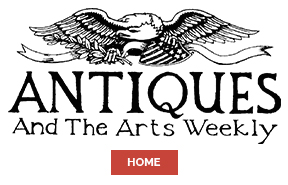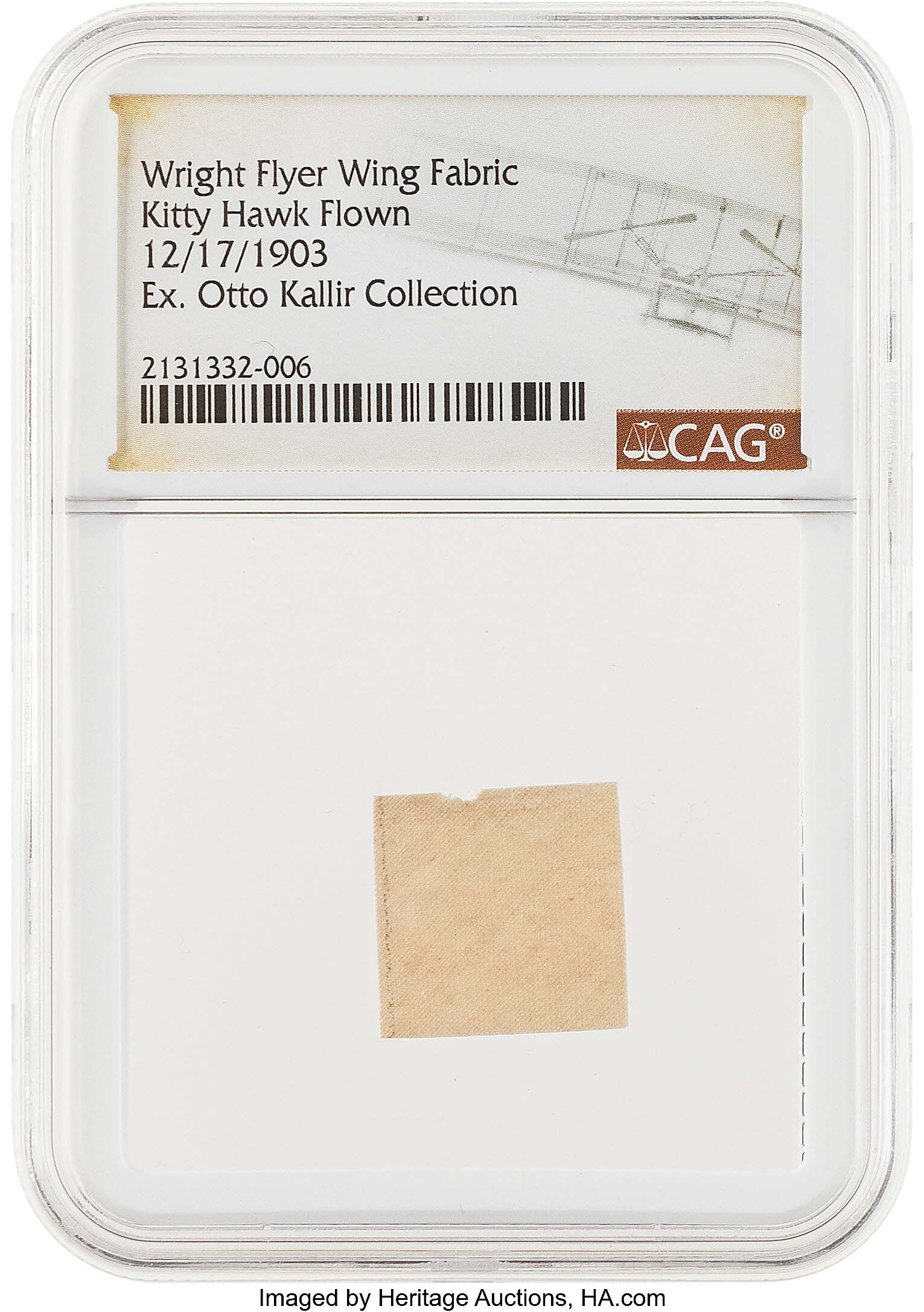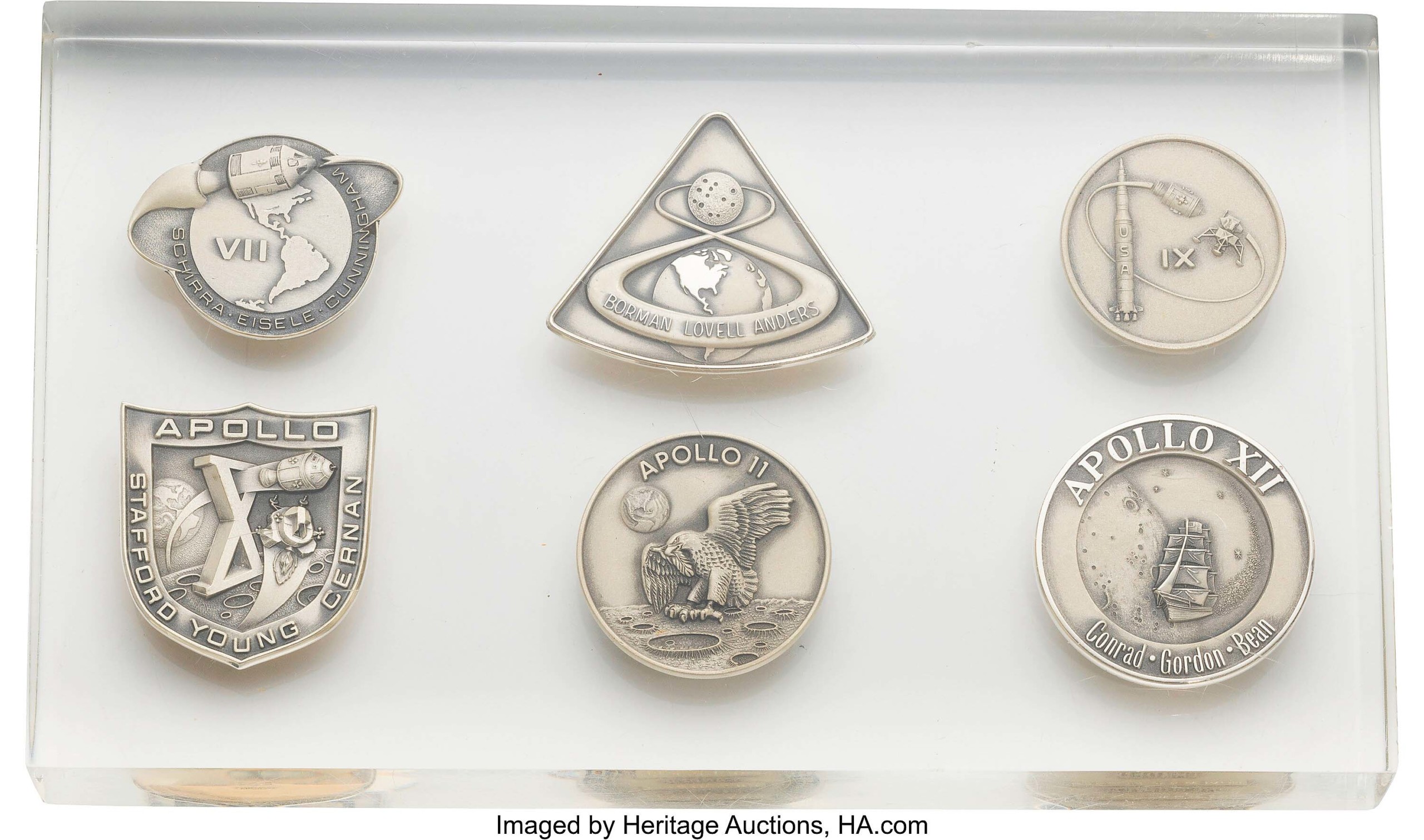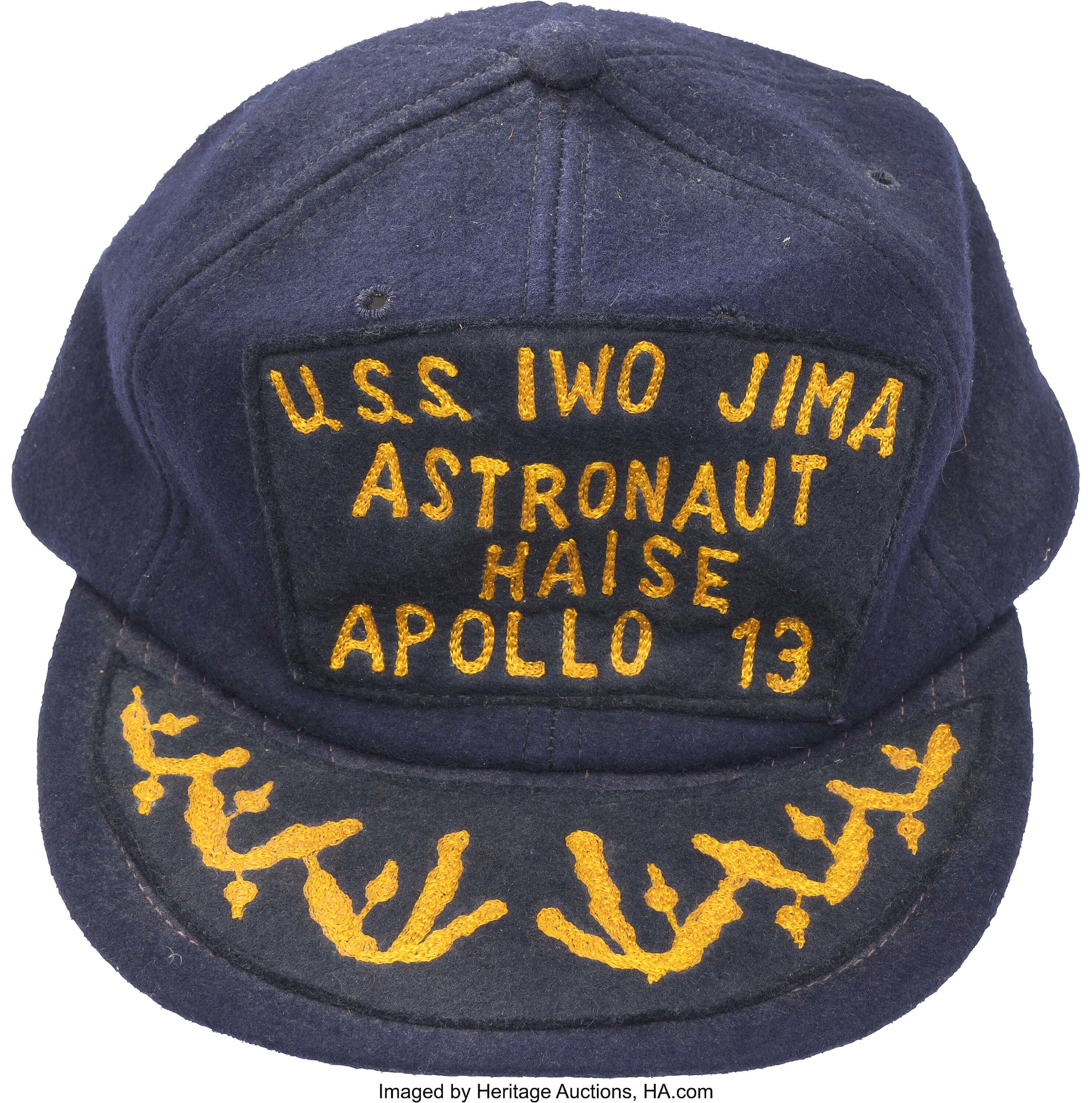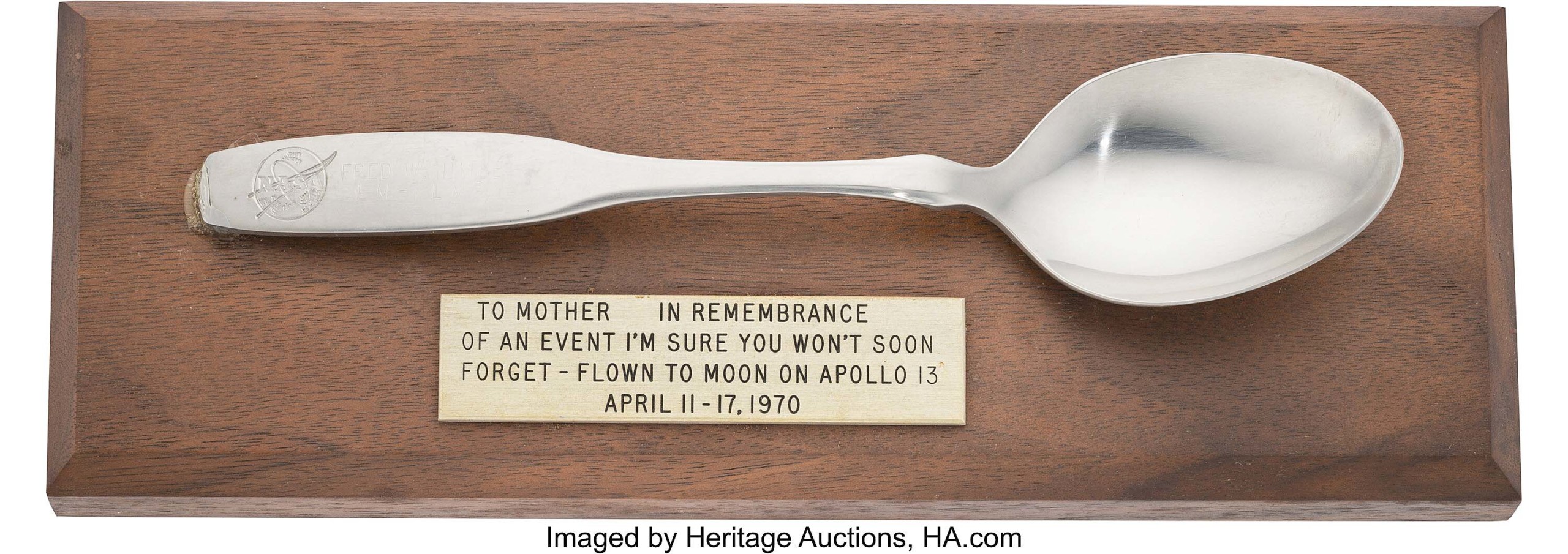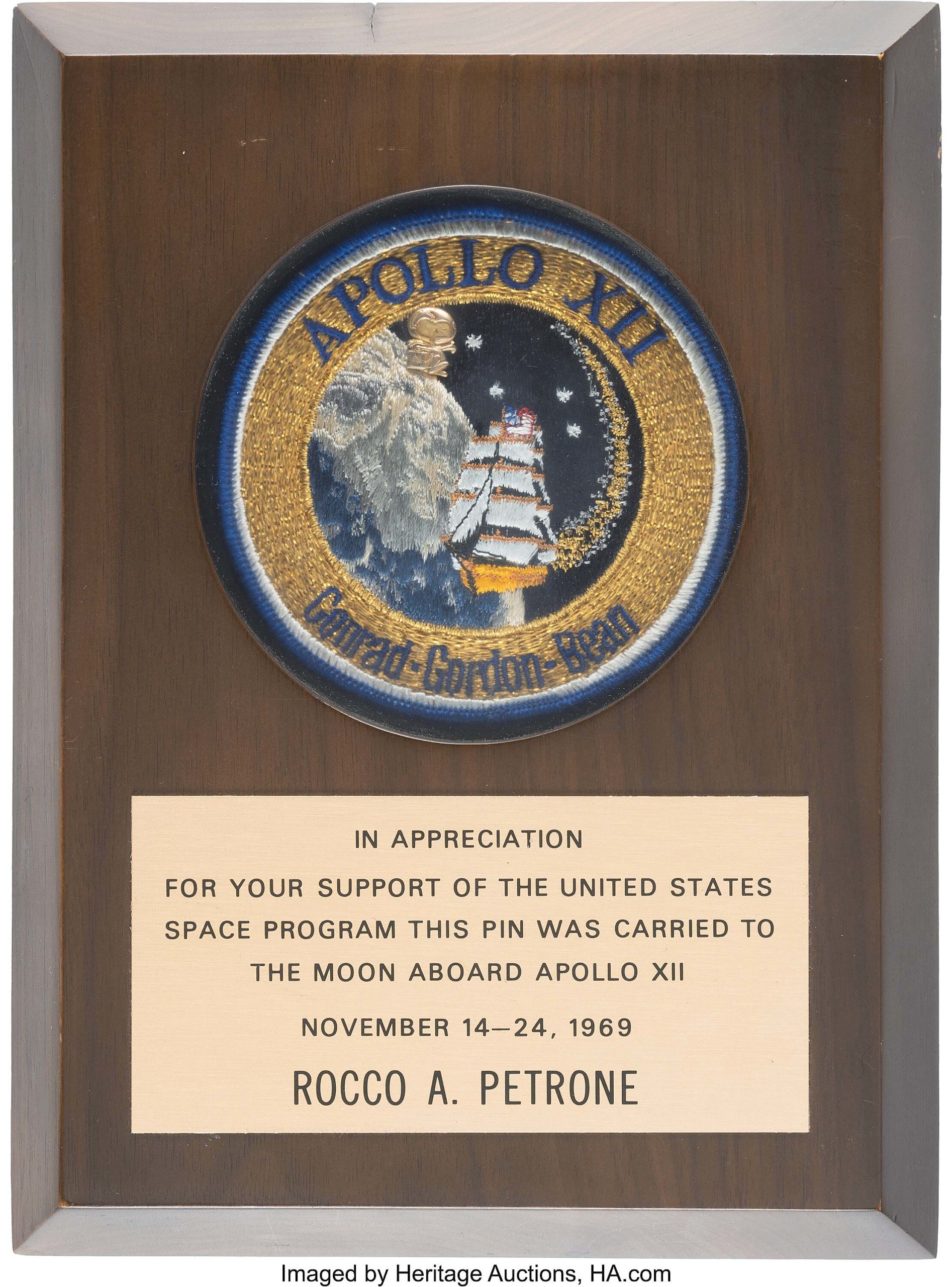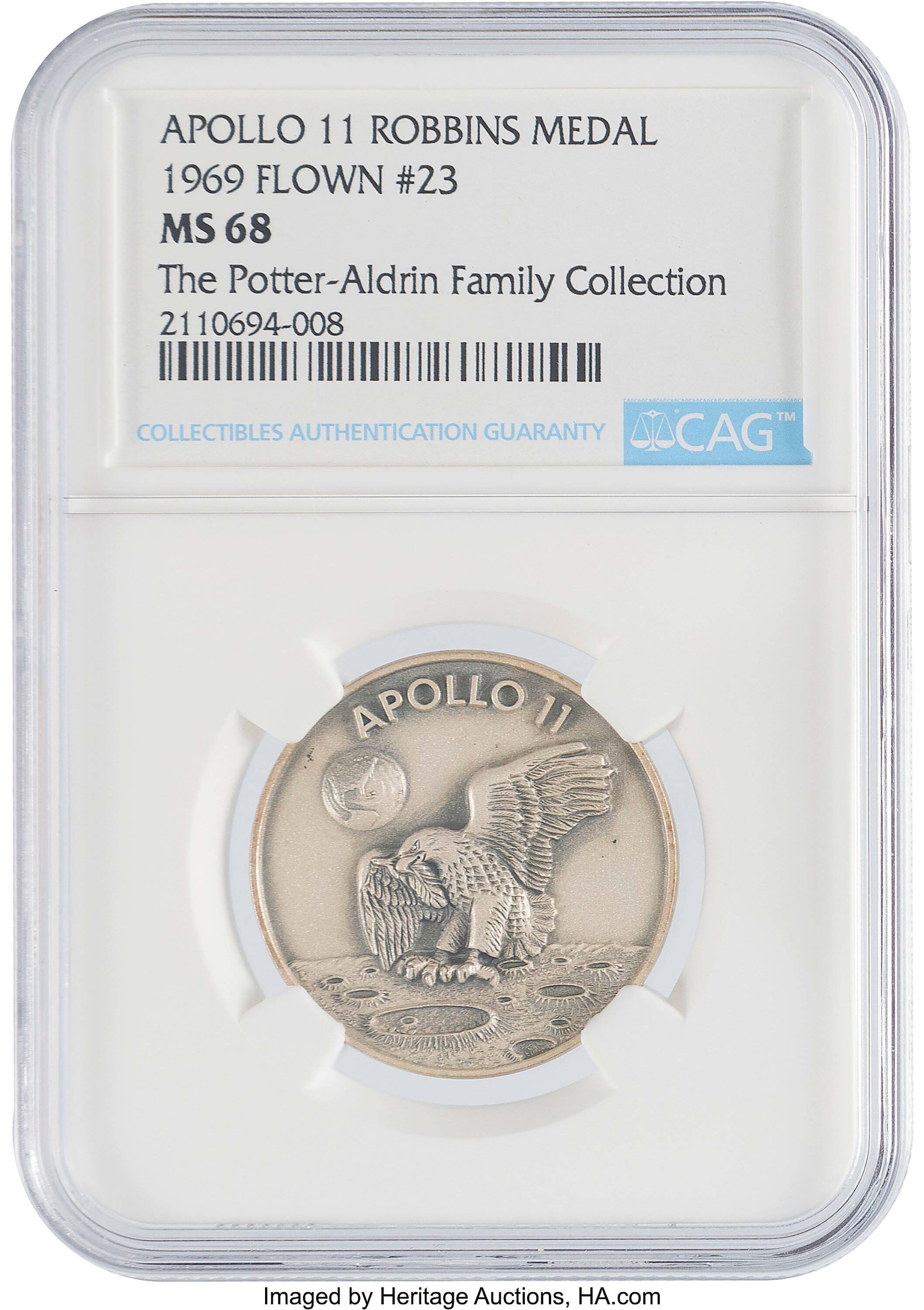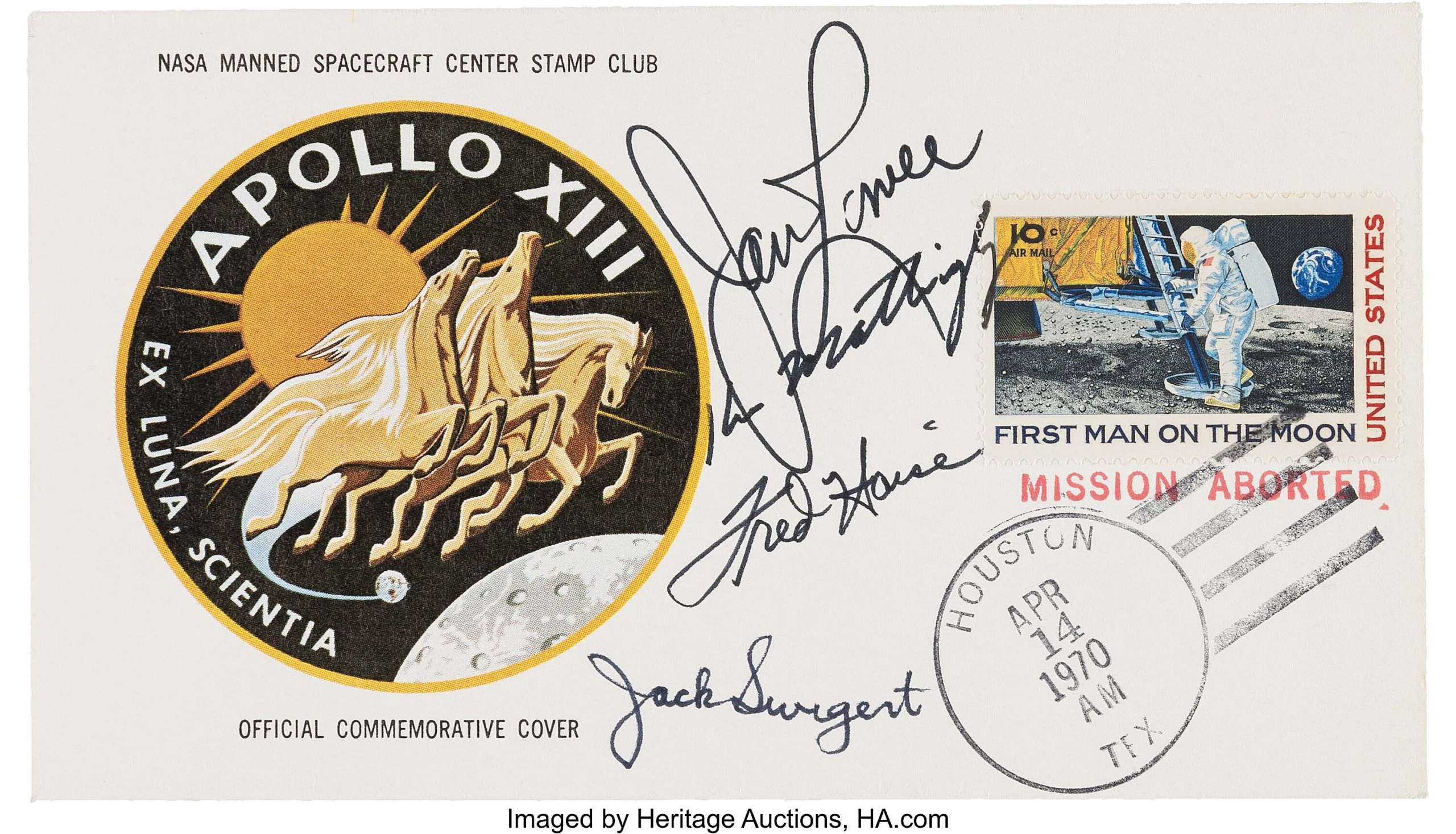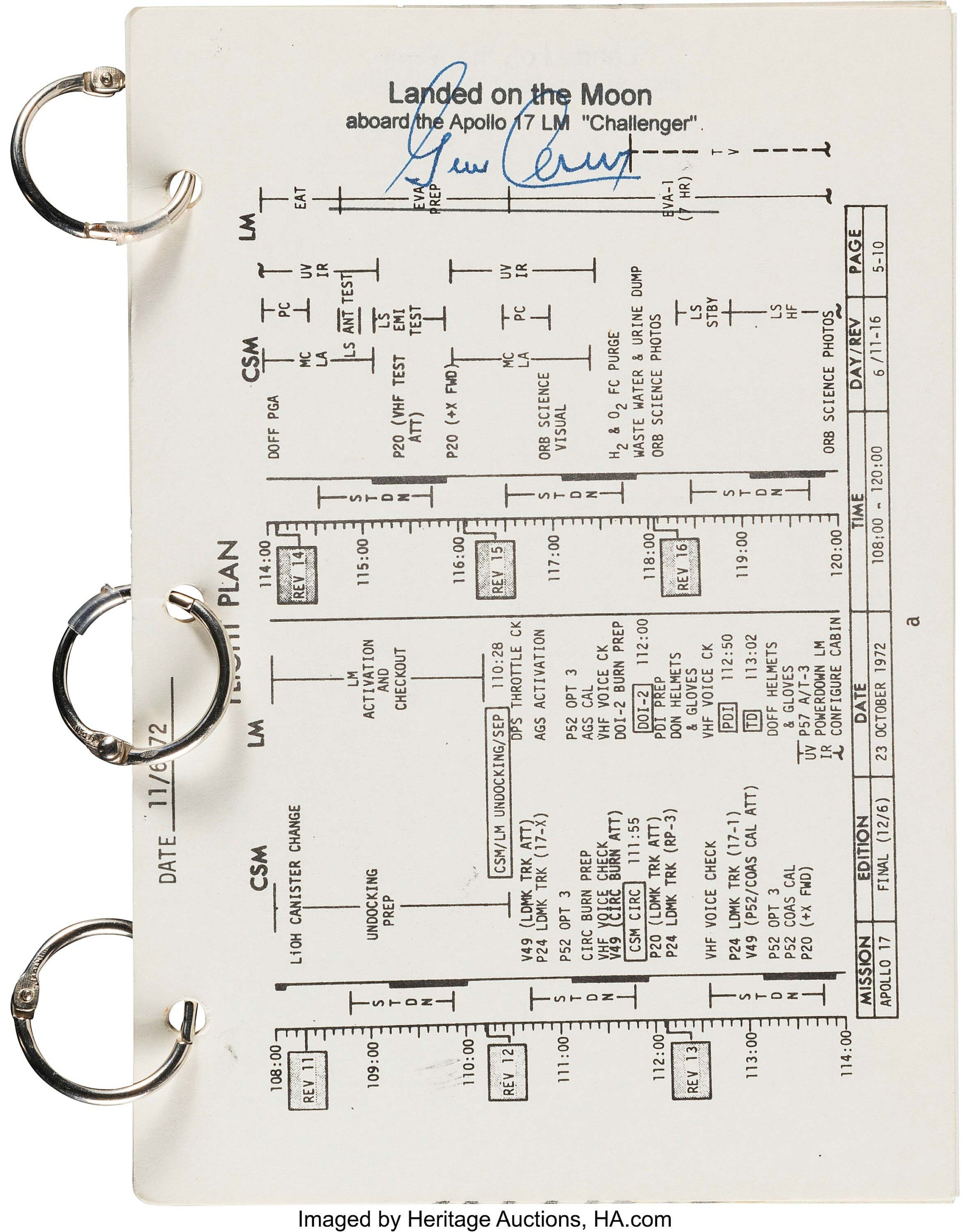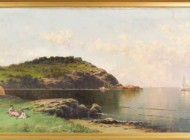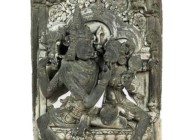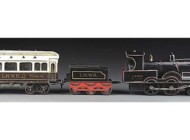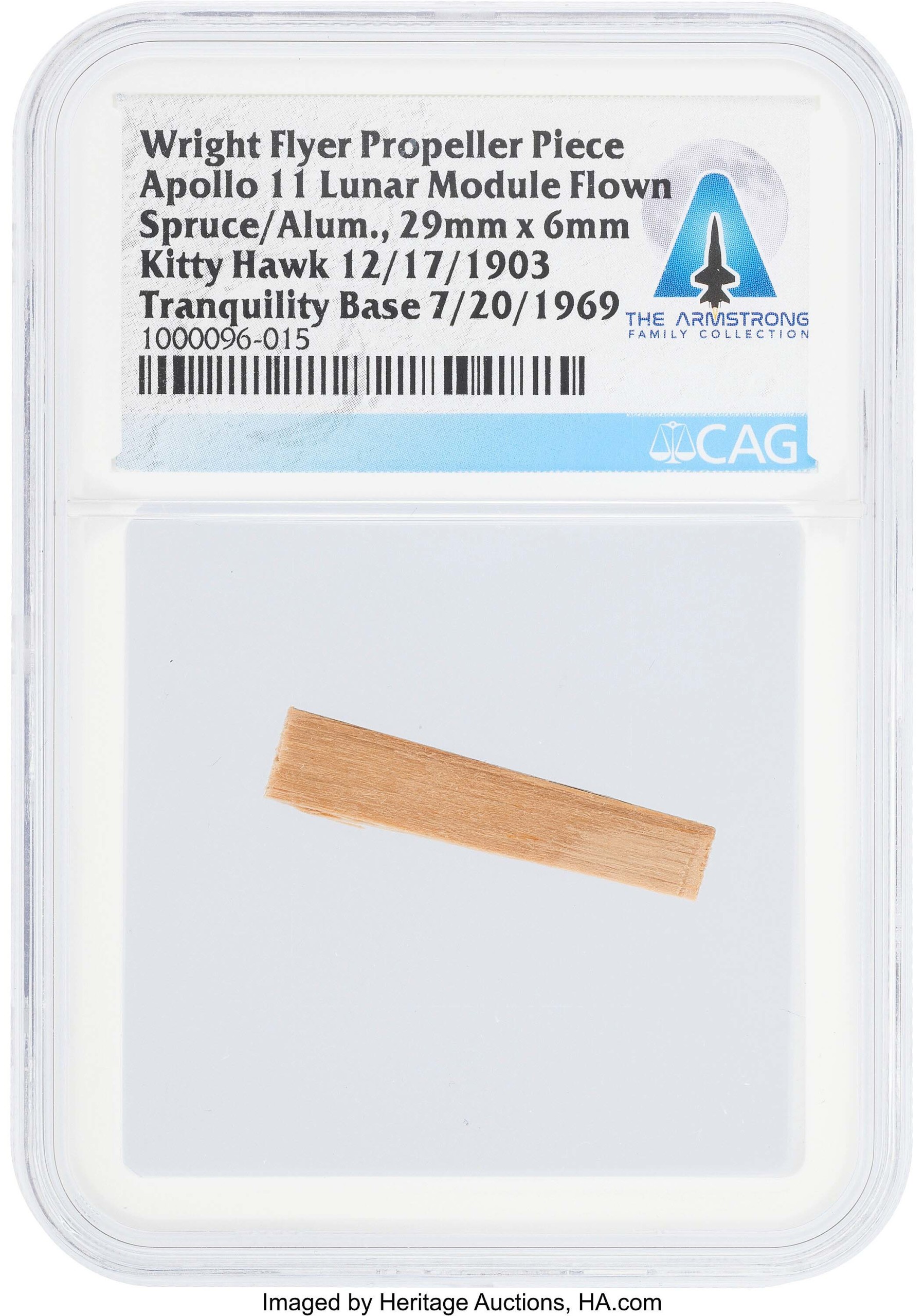
Fragments from the Wright Flyer are rare and bring high prices when they come up. This 30-by-7mm spruce sliver from the Flyer’s propeller that had belonged to Neil Armstrong achieved the top price of the sale, $150,000 from a US buyer.
Review by Madelia Hickman Ring
DALLAS — Heritage Auctions, a market-maker in the field of space collectibles since 2007, conducted its Space Exploration Signature Auction in two sessions: a live session with in-room bidding on June 14 followed by an online-only session on June 15. Nearly 700 lots were presented to competitors around the world and the auction achieved $1,695,154, well ahead of its estimate of nearly $1.1 million. Antiques and The Arts Weekly reached out to Brad Palmer, Heritage’s director of Space Exploration, for some insights on the current market as well as some of the sale’s top lots.
“It did really well and we’re pleased. Every auction we get quite a few new bidders and this sale was no exception; the category just keeps on growing. Around 2021, we started noticing more bidders buying important items, and we’re seeing a lot more bidders in their 20s, 30s and 40s, which is very encouraging. And, while the majority of things in our sales stay in the United States, we have several dozen international collectors who are big collectors.”
Palmer noted that items connected with astronauts of the Space Race — the international rivalry in the 1950s, 60s and 70s between the US and the USSR to lead in space exploration — are increasingly harder to find and acquire, not least because most of the astronauts have died.
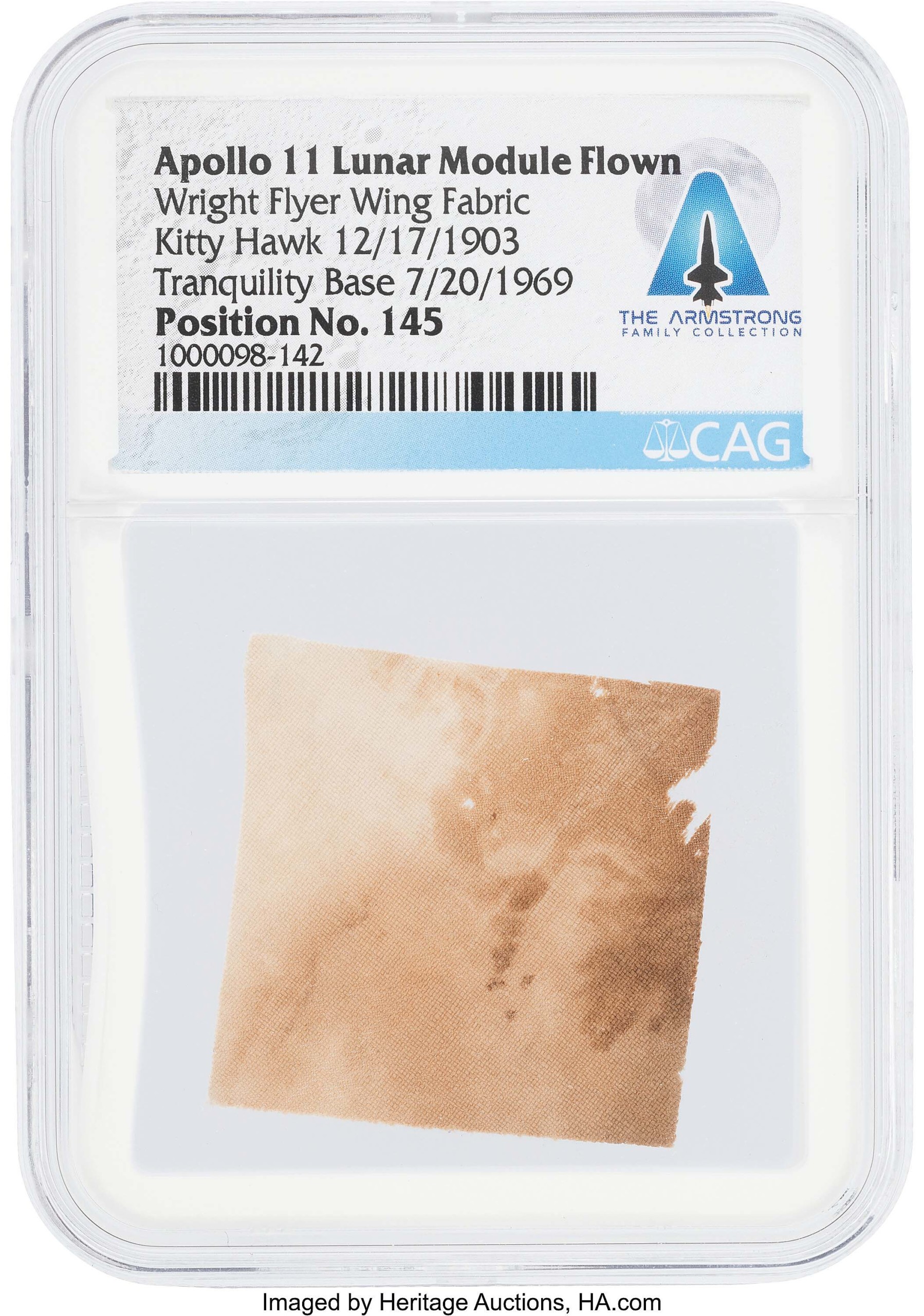
Riding to a second-place finish at $100,000 was this 1¼-inch-square scrap of muslin from one of the Wright Flyer’s wings that had province to Neil Armstrong.
Neil Armstrong, the first man to walk on the surface of the moon during the July 1969 flight of Apollo 11, remains arguably the most desirable figure, whose provenance will significantly add value to anything. Since 2018, Heritage has been offering things from Armstrong’s family — more than $8 million to date — and the sale included a few that brought the highest prices in this auction.
Minute fragments of the Wright Flyer, Orville and Wilbur Wright’s single-place biplane that made history in 1903 when it made the first manned flight of an aircraft, were flown on the Apollo 11 mission and two of them — both authenticated and encapsulated in plastic by Collectibles Authentication Guaranty (CAG) — were in the sale and had been owned by Armstrong; the two finished in first and second place. A sliver of spruce from the Wright Flyer’s propeller flew to $150,000, followed at $100,000 by a 1¼-by-1¼-inch square section of muslin from one of the Flyer’s wings. Palmer confirmed both were purchased by different US buyers.
Another scrap of muslin — one ¾-inch square — that had been part of a larger section of the Wright Flyer’s wing fabric lacked Armstrong provenance but had been bequeathed by Orville Wright to aviation expert Lester Gardner, who then passed it to aviation history collector Otto Kallir. Kallir used the fabric to make a 1:42 model of the Wright Flyer, which sold at auction (Bonhams New York, December 5, 2018). When the model was damaged in shipping, CAG experts removed the fabric from the wings and divided the wing fabric into small pieces, which were then sold to collectors. The tiny remnant achieved $20,000.
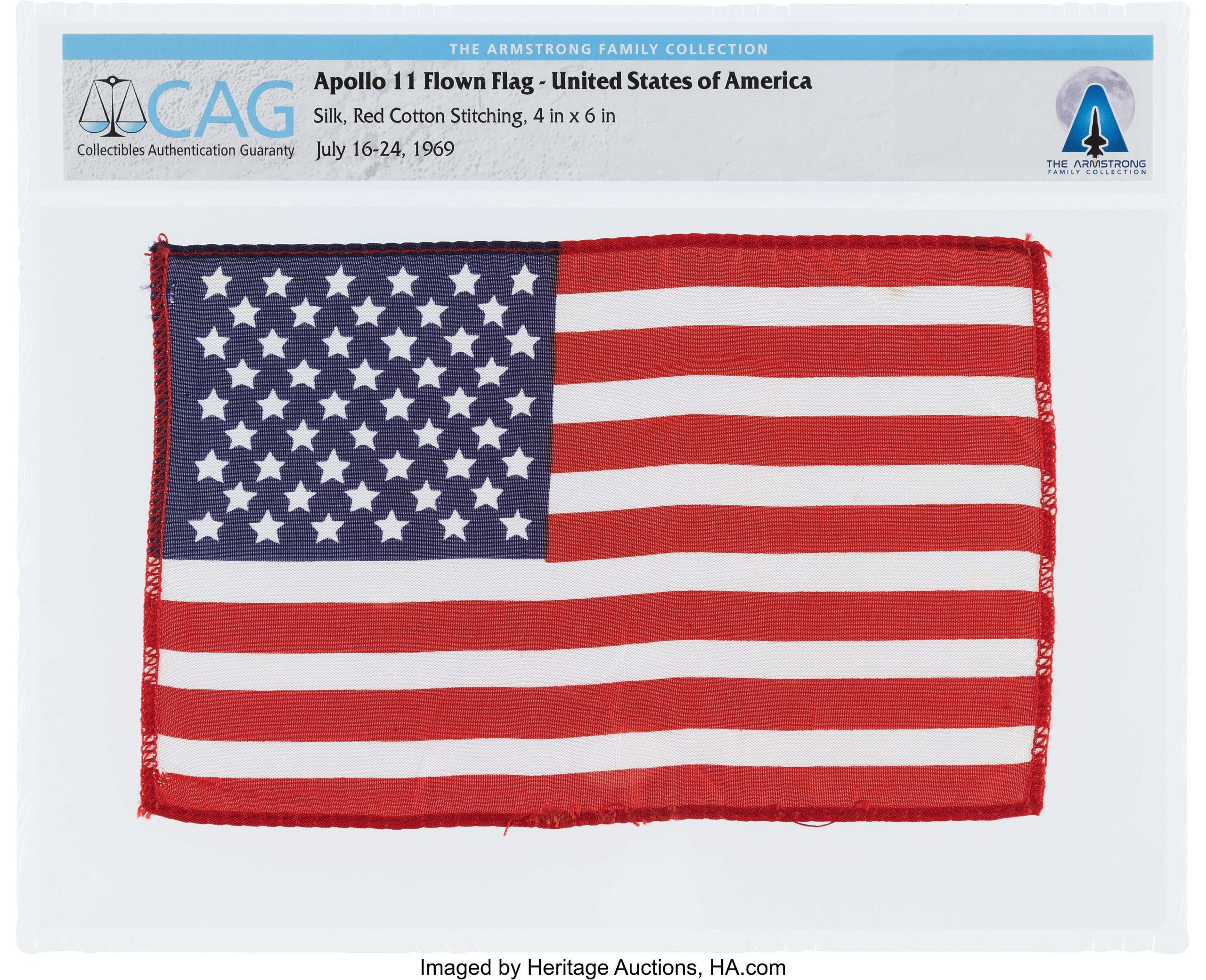
Flown on the Apollo 11 command module Columbia and owned by Neil Armstrong, this 6-by-4-inch silk American flag flew to $57,500.
Another Armstrong-owned treasure was a CAG certified 6-by-4-inch silk American flag that had also been flown on the Apollo command module, Columbia (July 16-24, 1969). A half-dozen phone bidders pursued it to $57,500.
Palmer had a few favorite lots in the sale that he shared with us. One of them was a seven-page lunar surface flight plan — flown on the Apollo 17 module (December 7-19, 1972) — that came from the personal collection of mission commander Gene Cernan. Palmer explained that flight plans were often sold off page by page but this example was intact and bore on the back a label certifying it came from his collection. Interest from bidders was intense, with more than 12 phone bidders chasing it to a final bid of $71,875.
Another of Palmer’s favorite lots was an Apollo 12-flown gold Snoopy pin presented to Rocco Petrone, director of NASA’s Apollo program. While silver Snoopy pins are more common — the auction had one that brought $18,750 — gold Snoopy pins are much rarer and the one Petrone had owned was the only one Palmer and his team had ever seen. Mounted in a presentation plaque with a 4-inch crew mission insignia patch, the pin also finished at $18,750.
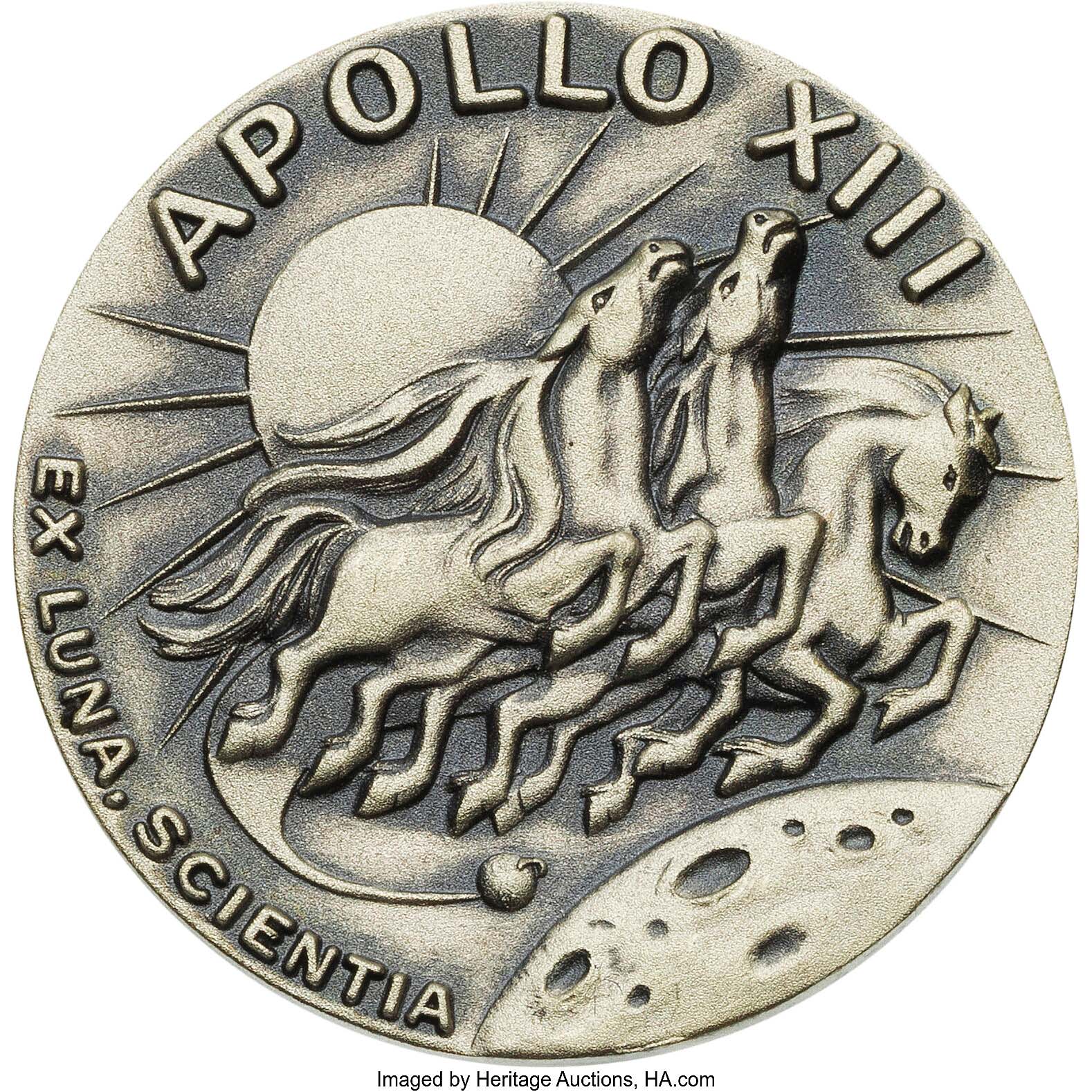
Fred Haise, Apollo 13 mission lunar module pilot, owned this Apollo 13 flown silver Robbins medallions, which brought $42,500 and the highest price for any Robbins medallion offered in the auction.
Nearly 50 lots had provenance or connection to Fred Haise (b 1933), the lunar module pilot of Apollo 13 (April 11-17, 1970). Leading this group at $42,500 was an Apollo 13-flown silver Robbins medallion; it was followed at $37,500 by a selection of six silver space-flown examples, collected by Haise from Apollo missions 7 (October 11-22, 1968) through 12 (November 14-24, 1969).
Going for $18,750 was an Apollo 13-flown silver spoon that had been given by Haise to his mother after the mission’s dramatic flight and landing. It was mounted with a plaque inscribed “To Mother In Remembrance/ Of An Event I’m Sure You Won’t Soon/ Forget- Flown To Moon On Apollo 13/ April 11-17, 1970.”
Heritage Auctions will host a Space Exploration Showcase auction on September 28 and a Space Exploration Signature auction on December 6.
Prices quoted include the buyer’s premium as reported by the auction house. For information, 214-528-3500 or www.ha.com.
